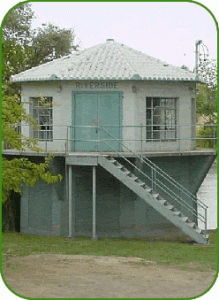About
History of Natomas Central Mutual Water Company
 Natomas Central Mutual Water Company is one of four mutual water companies formed around 1920 by the Natomas Company of California (NCC) to deliver appropriated water from the Sacramento River to the lands in area known as the American Basin. These lands were deeded to the NCC as a result of their “reclamation” efforts, i.e., construction of levees and the maintenance of drainage facilities to prevent annual flooding of the lands from the Sacramento River overtopping its banks. NCC’s plan for the American Basin was simple: 1) use their dredging equipment to construct a series of levees around an area prone to annual flooding, 2) construct drainage canals and pumping facilities to prevent future flooding 3) subdivide the properties into saleable parcels 4) market the parcels for a quick sale and 5) produce a return on the investment. NCC was successful with the first three steps of their process, but sale of the parcels was limited by the stock market crash of 1929 and the subsequent depression of the 1930’s. In an effort to enhance the salability of the properties, NCC invested additional capital in infrastructure such and roads and irrigation facilities, e.g., the creation of the four mutual water companies.
Natomas Central Mutual Water Company is one of four mutual water companies formed around 1920 by the Natomas Company of California (NCC) to deliver appropriated water from the Sacramento River to the lands in area known as the American Basin. These lands were deeded to the NCC as a result of their “reclamation” efforts, i.e., construction of levees and the maintenance of drainage facilities to prevent annual flooding of the lands from the Sacramento River overtopping its banks. NCC’s plan for the American Basin was simple: 1) use their dredging equipment to construct a series of levees around an area prone to annual flooding, 2) construct drainage canals and pumping facilities to prevent future flooding 3) subdivide the properties into saleable parcels 4) market the parcels for a quick sale and 5) produce a return on the investment. NCC was successful with the first three steps of their process, but sale of the parcels was limited by the stock market crash of 1929 and the subsequent depression of the 1930’s. In an effort to enhance the salability of the properties, NCC invested additional capital in infrastructure such and roads and irrigation facilities, e.g., the creation of the four mutual water companies.
The four original mutual water companies were named after the area served on the 1921 NCC subdivision map. Each water company constructed their distinct diversion facility and obtained individual water permits from the State of California. The Natomas Elkhorn Mutual Water Company (Elkhorn) was formed first, around 1918. The Natomas Riverside (Riverside), The Natomas Central (Central) and The Natomas Northern Mutual Water Company (Northern), were formed later, around 1921. Operating independent and distinct water companies was expensive and the Boards of Directors and management, in an effort to benefit from “economies of scale,” decided to combine all of the water rights and facilities through a series of mergers. The final merger in 1963 set the stage for the American Basin to be represented by one governing body during very important negotiations with the United States Bureau of Reclamation (USBR) concerning its Central Valley Project (CVP).
In 1964 the re-formed Natomas Central Mutual Water Company (Natomas), along with hundreds of other Sacramento River water rights holders (diverters), signed a Sacramento River Settlement Contract with USBR to purchase water from the CVP. In exchange for the right to purchase water, the diverters agreed to limit their diversions from the Sacramento River to a monthly allocation which represented a good faith estimate of their historical use. This marked the first time Natomas was forced to pay for the right to use water in the Sacramento River.
